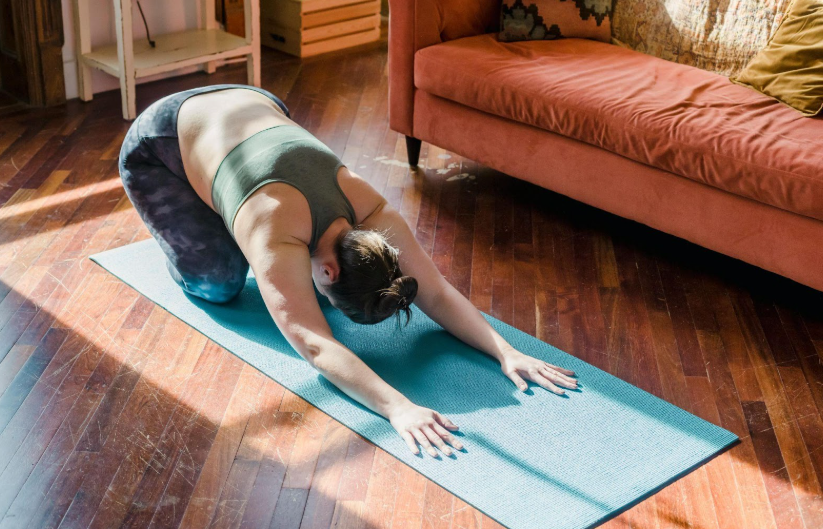How Can You Stop Neck Spasms from Occurring?
How Can You Stop Neck Spasms from Occurring?

Neck spasms can strike when you least expect them. A sudden twist, prolonged poor posture, or even stress can cause tight, uncomfortable muscle contractions in your neck.
The good news? There are effective ways to prevent these spasms from happening in the first place.
Neck Spasm Triggers
The first step in preventing neck spasms is to identify what might be causing them. One of the most common culprits is poor posture, especially if you spend hours hunched over a computer or looking down at your phone. This kind of posture puts strain on your neck muscles, causing them to tighten over time.
Injuries or underlying conditions like whiplash, arthritis, or herniated discs can also lead to spasms. If your neck pain feels recurring or severe, it’s worth consulting a healthcare professional to rule out more serious issues.
Keep Your Posture in Check
Proper posture plays a vital role in maintaining neck health. If you work at a desk, position your computer screen at eye level so you’re not constantly craning your neck downward. Use a chair that supports your lower back, and keep your feet flat on the floor to promote a neutral spine position.
When using your phone, bring it up to eye level instead of tilting your head down to read. You’d be surprised how much relief this simple habit can provide over time.
If you carry a backpack or shoulder bag, opt for one with wide straps and distribute the weight evenly. Switching to a crossbody bag or a rolling briefcase can also ease the strain on your neck and shoulders.
Stretch Regularly
Incorporating neck stretches into your daily routine can make a world of difference in preventing spasms. Gentle movements, like tilting your head side-to-side or rolling your shoulders backward, can help release built-up tension. Start small, and avoid jerky motions to prevent injury.
Yoga and Pilates are excellent for improving flexibility and strength, particularly in your neck and upper back. Many of their exercises emphasize alignment and controlled breathing, which can further reduce muscle tension.
If you’re unsure about the right stretches, ask a physical therapist or chiropractor who can guide you through exercises tailored to your needs.
Stay Active
Regular physical activity keeps your muscles strong and flexible, reducing the risk of spasms. Focus on low-impact exercises like swimming, walking, or cycling, which are gentle on your joints while promoting overall health.
Strengthening exercises targeting your core and upper body can also provide better support for your neck. A strong core stabilizes your spine and reduces the likelihood of strain creeping into your neck muscles.
Manage Stress Levels
Stress is a common trigger for neck spasms, as tension often settles in the shoulders and neck. Practicing relaxation techniques like deep breathing, meditation, or progressive muscle relaxation can aid in easing mental and physical stress.
Taking regular breaks throughout the day—especially if you’re working at a desk—can prevent your neck from stiffening up. Even five minutes of stepping away, stretching, or doing light movements can provide relief.
Consider incorporating self-care activities into your routine, like taking a warm bath, reading a book, or listening to soothing music. These moments of relaxation can do wonders for reducing tension in your neck muscles.
Adjust Your Sleeping Environment
Your sleeping posture and setup can affect your neck as well. If your pillow is too high or too flat, it may strain your neck while you sleep. Look for a pillow that supports the natural curve of your neck and keeps your spine aligned.
Sleeping on your back or side is usually better for your neck than sleeping on your stomach. Stomach sleepers often twist their necks to one side for prolonged periods, which can lead to stiffness and spasms.
If you wake up frequently with a sore neck, consider investing in an ergonomic pillow or mattress. These can provide the right level of support and minimize unnecessary strain.
Stay Hydrated and Mind Your Diet
Dehydration can lead to muscle cramps, including spasms in your neck. Drinking plenty of water throughout the day aids in maintaining muscle function and elasticity.
In addition to staying hydrated, pay attention to your diet. Magnesium-rich foods like spinach, almonds, and bananas can aid you in relaxing your muscles and preventing cramps. Calcium and vitamin D are also good for maintaining healthy muscles and bones.
Use Heat and Cold Therapy Preventatively
Applying a heating pad or taking a warm shower can relax tense muscles and improve blood flow, reducing the likelihood of spasms. Heat therapy is especially useful after a long day of sitting at a desk or engaging in physical activities that strain your neck. Cold therapy, on the other hand, can help minimize inflammation and numb any early discomfort that could escalate into a spasm.
The best part is you don’t need to wait until pain sets in to use these methods. Incorporating a brief session of heat or cold therapy into your routine can keep your muscles pliable and less likely to seize up. For added benefits, try alternating heat and cold treatments. This encourages circulation and reduces muscle tightness, giving your neck the best care.
Seek Professional Help When Needed
If you’re prone to neck spasms, consulting with a chiropractor or massage therapist can help address underlying issues. Chiropractors can realign your spine, improving posture and reducing strain on your neck muscles. Massage therapists can work out knots and tension, promoting better circulation and flexibility.
Physical therapists are another great resource, especially if your spasms are related to an injury or repetitive strain. They can create a personalized plan to strengthen weak muscles and correct imbalances.
Taking care of your neck health doesn’t require drastic lifestyle changes—just consistent, mindful habits that prioritize your well-being. That’s where our team at
Sycamore Chiropractic and Nutrition can help.
Contact us today to get to the root cause of your neck pain and keep neck spasms at bay!









